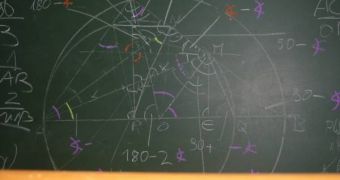During middle school, most children start figuring out for themselves whether or not they like exact sciences, such as mathematics. Therefore, if new generations of scientists are to take an interest in these fields of research, they have to be attracted towards them. Researchers at the Vanderbilt and Harvard universities have learned that the way in which teachers present mathematical problems to students during this time is quintessential to predicting if the young ones will follow a career in exact fields of research.
They have also found out that presenting different ways of resolving the same problem makes children more interested. In addition to taking a liking in math, previous studies have shown that this type of approaches to learning also boosts their cognitive abilities. Later in life, they will apply this method of thinking in finding solutions to real-life problems, and the experience they accumulate in school will determine if they select the easiest solution to a problem, as in the first one that comes to mind, or if they will thoroughly assess all options before deciding.
“We found that comparing different ways to solve a problem helped middle-school students become more flexible problem solvers and better understand the concepts behind the methods. Overall, students should not just learn one way to solve a math problem; rather, they should learn multiple ways and be encouraged to compare the benefits and drawbacks of each,” Vanderbilt University Peabody College Assistant Professor of Psychology and Human Development Bethany Rittle-Johnson, who has also been the co-author of the new studies, explained.
She went on to say that, “In US math classes, teachers typically demonstrate a procedure for solving a problem and then have children practice solving related problems. Students have very few opportunities to compare different ways to solve problems and tend to solve problems in a single way with limited understanding of why the way works.” The joint team published two papers detailing their finds, one in the Journal of Experimental Psychology and the second one in the Journal of Educational Psychology.
“In a past study, we found that seventh graders who compared two different ways to solve equations were both more accurate and more flexible in their equation solving. In our recent studies, we found similar benefits for fifth graders learning about estimation,” she concluded.

 14 DAY TRIAL //
14 DAY TRIAL //